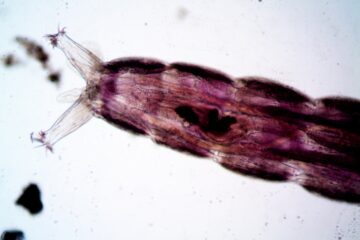![]()
Introduction
A science that is used in legal matters is referred to as forensic science. Any discipline of science employed in the settlement of legal disputes is forensic science since it is science used for legal purposes. Any science that is utilised in order to resolve legal disputes falls under the broad definition of forensic science.
In the criminal justice delivery system, factfinders are fascinated by science and technology. In order to decide a case involving criminal accusations, science, particularly forensic science or scientific evidence, is typically needed.
In order to resolve a problem that is outside the scope of fact finders’ expertise, the scientific evidence denotes the application of scientific theory and technique in a case-specific application. Forensic science is the field that was created for this reason. The use of science in law is known as forensic science. Forensic science is employed in law to convict the guilty and exonerate the innocent.
Origin
Forensis, a Latin term, is the origin of the word forensic. The definition of “forensic” in the dictionary is “pertaining to a court, the law, or a court of law.” But in terms of law, it could refer to the field of study that clarifies ambiguous issues in court of justice by examining the theories and methods of several scientific disciplines. It is a science composed of topics that both scientists and legal professionals may deem to be common ground.
Discussions about governmental matters took place in the ancient Roman forum, which also served as a courtroom for trials. As a result, the term “forensic science” now refers to the study and application of natural and physical sciences to the fair resolution of social and legal concerns. Its application to the legal system sets it apart from other branches of science, and forensic scientists are known for their frequent court appearances.
Forensic Science Today
Law, science, and forensic science all coexist today. The forensic scientist now participates steadily more actively in civil procedures and regulatory matters, despite the fact that forensic science has historically been closely associated with the criminal court system.
The range of physical evidence is essentially unrestricted for all forensic scientists. The scale of physical evidence can range from microscopic (like a pollen grain) to gigantic (for example, a diesel truck). This broad definition includes both civil proceedings such as contract violations and carelessness as well as criminal prosecutions in the broadest sense. It also includes patrons, ecological safeguard, physical well-being, and workplace protection.
Basically, forensic science is the application of science to the legal system. Criminal crimes involving a victim, such as assault, robbery, kidnapping, rape, and murder, as well as civil cases involving forgeries, fraud, or carelessness, are investigated using forensic science. In addition, forensic science determines whether laws or policies have been broken in the marketing of products related to food and drink, drug manufacturing, agricultural specific use, automobile discharge observance, consumption water cleanliness, and monitoring of international secret nuclear weapons, among other areas.[1]
Principles of Forensic Science
The disciplines and procedures of science are guided by the forensic science principles while analysing the evidence in order to provide answers to specific queries. These forensic science principles have an effect on criminal processes that commence at the moment of investigation when a crime occurs until the accused is found guilty in court. The following are forensic science principles that are important in criminal proceedings:
Locards Principle
Every encounter leaves a record was the fundamental tenet of forensic science established by Sir Edmund Locard, a forerunner in criminology and forensics. According to this idea, the criminal will enter the crime scene with something and leave with something. This idea is related to gathering trace evidence at the crime site.
Law of Individuality
Every object, whether natural or man-made, has a distinctive property or attribute that cannot be found in any other object, according to this law.
The fingerprint is the most widely used method for proving the law of individuality in several domains. Despite studying millions and billions of fingerprints, none of them—not even those of identical twins or two fingers of the same person—have ever matched.
Even while any two objects, including sand grains, salt crystals, seeds, twins, laptops, suits, typewriters, etc., may appear to be similar to one another, there is always a distinctive difference between them.
Consider salt, seeds, sand, or manufactured items like laptops, typewriters, and currency notes. Despite the fact that they may have a similar appearance, they always have something in common.
Locard’s Principle of Exchange
Whenever two entities come into contact with one another, they trade traces, according to this concept.
This idea is known as Locard’s principle since it was put forth by the French physicist Edmond Locard.
According to Locard, when a criminal, a murder weapon, or any of his objects comes in contact with the victim or the surroundings, they leave some traces there while also picking up the traces from the people or places they have been in contact with. The perpetrator can be connected to the crime scene and the victim if the expert can identify such traces and trace them back to their original source. Almost every instance where there is a touch, such as fingerprints, footprints, tyre tracks, bullet fragments, hair samples, etc., illustrates this principle.
Depending on the type of crime, a criminal may leave behind any number of evidences, including prints, hair, skin, muscle, blood, bodily fluids, clothing fragments, and more. A criminal also takes a piece of the crime scene with him by interacting with these items at the scene, whether it be dirt or another sort of trace evidence.
Law of Progressive Change
This law says that all things change progressively with the passing of time.
Simply put, nothing lasts forever, and various items change at varying rates. Because the crime scene and the criminal alter over time, this law has a substantial impact on crime scene investigations. The implicated crimes, evidence, and things can become unidentifiable.
If the crime scene is not promptly secured, things like the weather, the presence of people or animals, etc., change very quickly. For instance, if the scene of a car accident on a busy highway is not secured quickly, it may become unrecognisable or lose all relevant evidence. It is possible for items like bullet fragments to rust, shoes to show signs of wear and tear, wooden items to rot from termites, knives to take on new designs, etc. Quick action is therefore necessary in all areas of criminal investigations.
Principle of Comparison
According to this law, only things that are similar may be compared.
This principle, which refers to the kind of specimen or sample needed for comparison in the lab, is particularly crucial in laboratory investigations. “Only the likes may be compared,” it says. It highlighted the need to offer comparable samples and specimens of the questioned objects for comparison.
The expert in a murder case believes that the victim was killed by being stabbed with a sharp object. For instance, sending a knife as a comparison if the murder was committed with a pistol is pointless.
The key need of this principle is to provide specimens or samples of a similar kind for accurate comparison with the in question sample found at the crime scene.
Principle of Analysis
According to this rule, the sample being analysed is the best possible analysis.
This principle emphasises the necessity of accurate evidence sampling and packaging in order to prevent tampering and destruction as well as for efficient analysis and outcomes. The investigation may be misled by improper sampling.
When a hard drive is placed in a paper bag and placed in the vicinity of a powerful electromagnetic field, it may become damaged. Therefore, it is essential to adopt always appropriate and effective collection and packaging strategies.
Law of Probability
According to this law, “All identifications, whether specific or general, conscious or unconscious, are based on likelihood.”
Most people misunderstand what is meant by probability. Out of all the many ways that an event could occur or fail to occur with equal ease, it calculates the likelihood of that event occurring in a specific way.
If a missing lady has a tattoo of a bear on her right hand and an old injury mark on her head, and an unidentified woman is found slain with those same traits, there is a significant likelihood that the unidentified body is that missing woman. There is a one in a million chance that the body is that of another woman.[2]
Law of Circumstantial Facts
This law states that “man can and do lie, but facts do not lie.”
Facts cannot be false, they cannot lie, and they cannot completely disappear. Therefore, the value of circumstantial evidence is advantageous for oral testimony.
When a person is serving in the military, it is common knowledge that they report for duty at 9 am and continue until 10 pm. He kills someone while sneaking out of the unit at night, then sneaks back in in order to resume his duty as scheduled. He can demonstrate his presence in the unit at that time and avoid penalty by providing circumstantial proof.
Conclusion
Forensic science, then, is the branch of science that applies the concepts and practises of natural sciences to the recognition, identification, individualization, and evaluation of physical evidence for the administration of criminal justice.[3]
[1]Nishka Prajapati, Concept and Principles of Forensic Science, Legal Service Of India, https://www.legalserviceindia.com/legal/article-2974-concept-and-principles-of-forensic-science.html#:~:text=Thus%20Forensic%20Science%20is%20that,of%20administration%20of%20criminal%20justice
[2] Laws and Principles of Forensic Science, Forensic Fingerprint (March 19th , 2022), https://www.forensicfingerprint.in/2022/03/laws-and-principles-of-forensic-science.html
[3]7 Basic Laws and Principles of Forensic Science, Forensic Yard (May 13th, 2021), https://forensicyard.com/laws-and-principles-of-forensic-science/



0 Comments